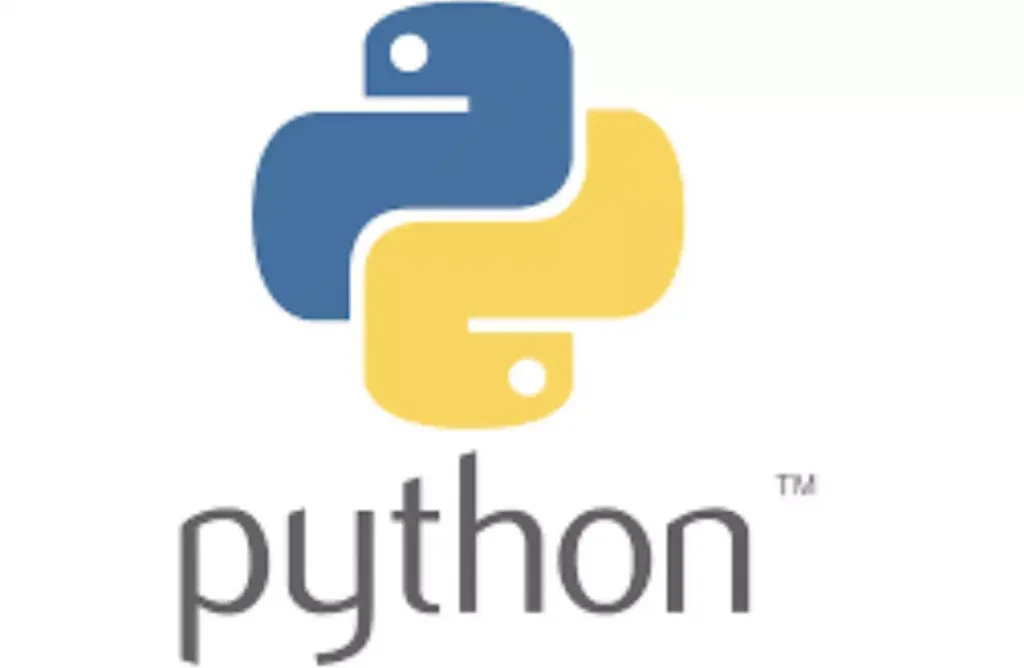In the expansive domain of web development, back-end web development stands as a pivotal, indispensable component, serving as the bedrock for the operational efficacy of digital platforms. Within the dynamic milieu of web development, where user interfaces and captivating designs often seize the spotlight, the back end assumes the role of a sophisticated orchestrator. It intricately maneuvers complex processes, propelling applications, overseeing database management, and ensuring the delivery of seamless user experiences. Concurrently, the front end captivates with its visual allure. This comprehensive manual delves into the intricate complexities of back-end web development services, offering an exhaustive exploration of this nuanced domain.
- Back-end development involves server-side elements, data management, and security.
- Back-end developers use languages like Java, PHP, Ruby, Python, and TypeScript.
- Back-end services include database management, APIs, security, and performance optimization.
What Is Back-End Development?
Back-end development constitutes the meticulous orchestration of server-side elements within an ecosystem, intricately managing user authentication, security protocols, database construction, data storage, and retrieval. Back-end developers navigate this intricate landscape utilizing frameworks and programming languages tailored to the complexities of server-side processes.
At its core, back-end development carries the weighty responsibility of ensuring the dependable governance of data and server operations. This involves scrutinizing user inputs, implementing secure storage practices, and precise data retrieval. The arsenal of programming languages available, including Java, PHP, Ruby, Python, and JavaScript, is a carefully curated selection chosen for their unique strengths and suitability for specific tasks.

What Does a Back-end Developer Do?
A back-end developer is pivotal in crafting the technical foundation that underpins the intricate functionalities of digital platforms. This multifaceted responsibility encompasses various domains:
- Server-Side Logic: Proficiency in constructing server-side code distinguishes back-end developers. This involves formulating the logic governing data handling, executing user requests, and intricately interlinking diverse components. Their meticulous oversight ensures the seamless operation of the back end, yielding the intended outcomes.
- Database Management: Back-end developers build and adeptly manage databases and repositories for organizing and storing data. Protecting sensitive information is paramount to ensuring data integrity, optimizing query performance, and implementing robust security protocols.
- API Development: Developers engineer APIs to facilitate communication between front-end and back-end components. These interfaces delineate how information and features can be accessed and utilized, fostering the seamless integration of diverse application components.
- User Authentication and Security: The paramount concern of back-end developers lies in security. Robust authentication and authorization systems are deployed to safeguard user data, ensuring only authorized users can access sensitive functionalities.
- Scalability and Performance: Ensuring scalability and optimal performance, even during periods of substantial traffic, requires developers to optimize server configurations and code. This involves implementing strategies such as caching, load balancing, and judicious management of server resources.
- Integration: Enhancing application functionality involves integrating third-party services, APIs, and tools. This may encompass integrations with social networks, payment methods, and other components, expanding the application’s capabilities.
- Bug Fixing and Maintenance: Ongoing vigilance characterizes a developer’s role as they continually assess back-end performance, identify and rectify issues, and undertake necessary upgrades to maintain system integrity.
Back-end: The architect of the digital infrastructure, the developer, is in charge of designing the complex machinery that drives user experiences. They can develop dependable, effective, and secure back-end systems that power the functions of web apps and services thanks to their expertise in programming languages, server-side frameworks, and database technologies.
Are you looking for highly skilled Back-End Web developers to hire for your project?
Contact UsTypes of Back-end Development Languages
Various programming languages are the bedrock for robust and effective back-end web development, providing programmers with diverse tools to construct sophisticated digital ecosystems. Each language possesses unique features and capabilities tailored for intricate back-end functionalities.
Java: Esteemed for its reliability and platform independence, Java is a cornerstone in back-end programming. Its object-oriented structure, extensive library support, and compatibility across diverse operating systems make it a favored choice for creating scalable and secure programs.

PHP: Synonymous with web development, PHP enjoys widespread usage in back-end programming. Its simplicity, extensive community support, and seamless interaction with web servers make it an optimal choice for dynamic web pages and applications.

Ruby: Celebrated for its elegant syntax and developer-friendly environment, Ruby shines as a language conducive to rapid application development. The popularity of Ruby on Rails, a web framework built on Ruby, lies in its ability to simplify complex tasks and streamline the creation of robust back-end systems.

Python: Renowned for readability and adaptability, Python has garnered significant popularity in back-end programming. Its user-friendly nature, extensive library, and frameworks like Django and Flask empower developers to design intricate and effective back-end functionalities.

JavaScript: JavaScript stands out as a versatile and widespread programming language that is used in both front- and back-end web development. Its popularity has increased dramatically, especially in backend development, with the advent of Node.js. Node.js has made a significant contribution to the evolution of JavaScript into a backend language, as evidenced by historical usage patterns and statistics. The backend capabilities of JavaScript are based on features such as lightweight scripting, dynamic typing, interpretation, support for object-oriented programming, and client-side validation. In addition, a large community fosters continuous growth and innovation in backend development. Well-known frameworks such as NodeJS, Express, and MeteorJS exemplify JavaScript’s prowess in creating reliable and scalable server-side applications.

What Kind of Back-End Web Development Services Are Available?
Within the expansive domain of back-end web development, various services and solutions collaboratively compose the structural foundation and maintenance framework for digital platforms. These services encapsulate a spectrum of functionalities, collectively fortifying the efficient operation of web applications.
- Database Management: A robust database system lies at the nucleus of every dynamic web application. Back-end developers meticulously architect, implement, and oversee databases, employing database management systems such as MySQL, PostgreSQL, and MongoDB. This orchestration ensures data integrity, fortified security, and optimal query performance.
- API Development: Acting as crucial bridges linking the front and back end of web applications, Application Programming Interfaces (APIs) are crafted by back-end developers. These APIs facilitate seamless communication between diverse system components, enabling data exchange, user authentication, and integration with third-party services.
- Server Management: The onus of configuring, maintaining, and optimizing web servers rests on the shoulders of back-end developers. They ensure the smooth operation of servers, adeptly handling traffic spikes and guaranteeing consistent uptime. This responsibility spans server deployment, load balancing, and scalable measures to accommodate burgeoning user bases.
- Authentication and Security: Paramount in web applications, security mechanisms are implemented by back-end developers to verify user identities and ensure robust security. Encryption protocols are integrated, authorization processes are managed, and safeguards against prevalent security vulnerabilities, such as SQL injection and cross-site scripting (XSS), are meticulously implemented.
- Data Processing: In applications driven by data intensity, back-end developers architect processes for data transformation, aggregation, and analysis. Data pipelines, batch processing, and real-time data streaming derive valuable insights from raw data.
- Caching and Performance Optimization: To enhance the performance of web applications, back-end developers implement caching strategies. Storing frequently accessed data in cache memory diminishes database queries, amplifying response times. Additionally, they optimize code and deploy techniques like content delivery networks (CDNs) to minimize latency.
- Content Management Systems (CMS): For content-laden websites, back-end developers seamlessly integrate and customize CMS platforms such as WordPress, Drupal, or Joomla. These systems streamline content creation, management, and publishing, affording non-technical users the ability to maintain their websites effortlessly.
- Monitoring and Debugging: Employing monitoring tools, back-end developers vigilantly track application performance, identifying bottlenecks, and swiftly troubleshooting issues. Monitoring server health, application metrics, and logs ensures seamless operation and rapid resolution of anomalies.
- E-commerce Functionality: In the realm of e-commerce applications, back-end developers implement features like shopping carts, payment gateways, order processing, and inventory management. These functionalities facilitate seamless online transactions and efficient business operations. This nuanced orchestration defines back-end web development services’ diverse and intricate landscape.
Conclusion
Ficus Technologies offers modern web development services. With a wide range of programming languages at their disposal, including Java, PHP, Ruby, Python, and JavaScript, our skilled development team can create solutions that cut through complexity and boost productivity.
Our expertise knows no bounds, from building trustworthy databases to enhancing server performance and fortifying security infrastructures. Ficus Technologies is prepared to precisely and creatively meet your development requirements, whether the project’s scope is a complex application or a sizable website. Our expertise in offering dependable, effective, and secure server solutions exemplifies our unwavering commitment to excellence.
Back-end development significantly contributes to the scalability of web applications by optimizing server configurations, implementing caching strategies, and ensuring efficient database management. Developers deploy techniques like load balancing to distribute traffic evenly, preventing server overload during spikes in web traffic. Scalability measures, such as content delivery networks (CDNs), are implemented to minimize latency and enhance response times. The expertise of back-end developers in managing server resources and deploying scalable solutions ensures that web applications can seamlessly handle growing user bases and evolving business needs.
Back-end developers prioritize web application security by implementing robust authentication systems, encryption protocols, and safeguards against common vulnerabilities. This includes protecting against SQL injection and cross-site scripting. Security measures are essential to verify user identities, safeguard sensitive data, and ensure a secure digital environment, maintaining user trust and preventing potential breaches or unauthorized access.








